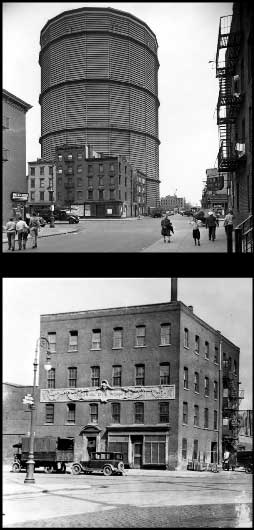

By the middle of the nineteenth century, Rose Hill and Kips Bay had developed into a neighborhood that was both residential and industrial. On the blocks east of Third Avenue, tenements were found side by side with small manufacturers, lumber yards and slaughter houses. Closer to the East River, tenements were mixed with large factories and foundries. Rose Hill and Kips Bay was not unique, and similar land use patterns could be found elsewhere in Manhattan. This began to change in the late 1850s as the nature of manufacturing throughout New York shifted away from large-scale industrial operations. The rapid development of Manhattan led to an increase in land values, which, in turn, made large, capital intensive industrial operations less profitable. Machine shops, iron works, sugar refineries, ship building and stone cutting plants required large areas of land that, as property values rose, could be more profitable if used in other ways. An increasing number of factories and plants began to move out of Manhattan over the course of a twenty year period that lasted into the 1870s. This marked the beginning of New York's decline as a major manufacturing center.
In place of heavy industries, there was an increase in smaller, more labor intensive manufacturing that could be carried out in loft buildings rather than plants that took up most of a city block. These included printers, furniture and piano manufacturers, cigar makers, shoe manufacturers and the needle trades. In Rose Hill and Kips Bay,